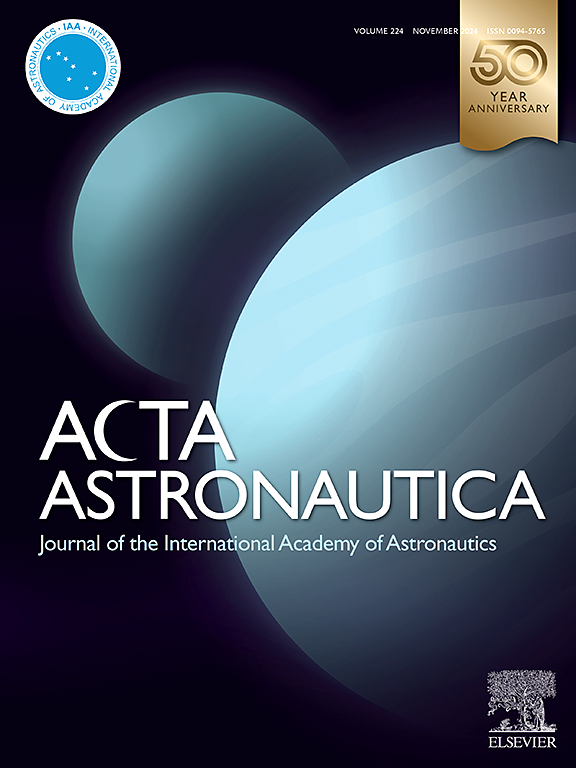金星变高度飞行器的规划与最优控制
IF 3.1
2区 物理与天体物理
Q1 ENGINEERING, AEROSPACE
引用次数: 0
摘要
长期以来,金星一直对人类对地球和类地岩石天体在太阳系中如何形成和演化的理解很感兴趣。我们探索金星所缺少的一项关键能力是能够以最小的能量在大气层中周期性地、长时间地导航的技术。最近,喷气推进实验室(JPL)开发了一种可在金星大气中运行的可变高度空中机器人。通过在双腔结构中交换氦气,该飞行器能够在10公里的高空范围内顺利航行。虽然飞行器是开环稳定的,但其依赖于大气的非线性振荡行为引入了对更精细的轨迹跟踪的需求,以满足任务的科学目标。这项工作旨在为这种飞行器架构开发一个模拟和第一凸优化最优控制框架,目标是精确的任务驱动高度变化和参考跟踪。喷气推进实验室在黑岩沙漠中对一个按比例大小的飞行机器人原型进行了先前的测试,用于控制装置模型匹配。最后,我们考虑了多任务驱动的高度变化机动,并给出了满足作战要求和约束的最小超调平滑轨迹跟踪。本文章由计算机程序翻译,如有差异,请以英文原文为准。
Planning and optimal control of a Venus variable altitude aerobot
Venus has long been of interest in humankind’s understanding of how Earth, and Earth-like rocky bodies, form and evolve in our solar system. A key missing capability for our exploration of Venus are technologies which can navigate through the atmosphere recurrently and over extended periods of time, with minimal power. Recently, the Jet Propulsion Laboratory (JPL) has developed a variable altitude aerobot for operation in the Venus atmosphere. By exchanging helium gas within a dual chamber architecture, the aerobot is capable of smoothly navigating through a km tall altitude range. Although the aerobot is open-loop stable, its atmospherically dependent non-linear oscillatory behavior introduces the need for finer trajectory tracking in order to meet the mission scientific objectives. This work aims at developing a simulation and first convex optimization optimal control framework for such an aerobot architecture, targeted towards accurate mission driven altitude changes and reference tracking. A prior test conducted by JPL on a scale-size aerobot prototype in the Black Rock desert is used for the control plant model matching. Finally, we consider multiple mission driven altitude change maneuvers and show smooth trajectory tracking with minimal overshoot satisfying the operational requirements and constraints.
求助全文
通过发布文献求助,成功后即可免费获取论文全文。
去求助
来源期刊

Acta Astronautica
工程技术-工程:宇航
CiteScore
7.20
自引率
22.90%
发文量
599
审稿时长
53 days
期刊介绍:
Acta Astronautica is sponsored by the International Academy of Astronautics. Content is based on original contributions in all fields of basic, engineering, life and social space sciences and of space technology related to:
The peaceful scientific exploration of space,
Its exploitation for human welfare and progress,
Conception, design, development and operation of space-borne and Earth-based systems,
In addition to regular issues, the journal publishes selected proceedings of the annual International Astronautical Congress (IAC), transactions of the IAA and special issues on topics of current interest, such as microgravity, space station technology, geostationary orbits, and space economics. Other subject areas include satellite technology, space transportation and communications, space energy, power and propulsion, astrodynamics, extraterrestrial intelligence and Earth observations.
 求助内容:
求助内容: 应助结果提醒方式:
应助结果提醒方式:


